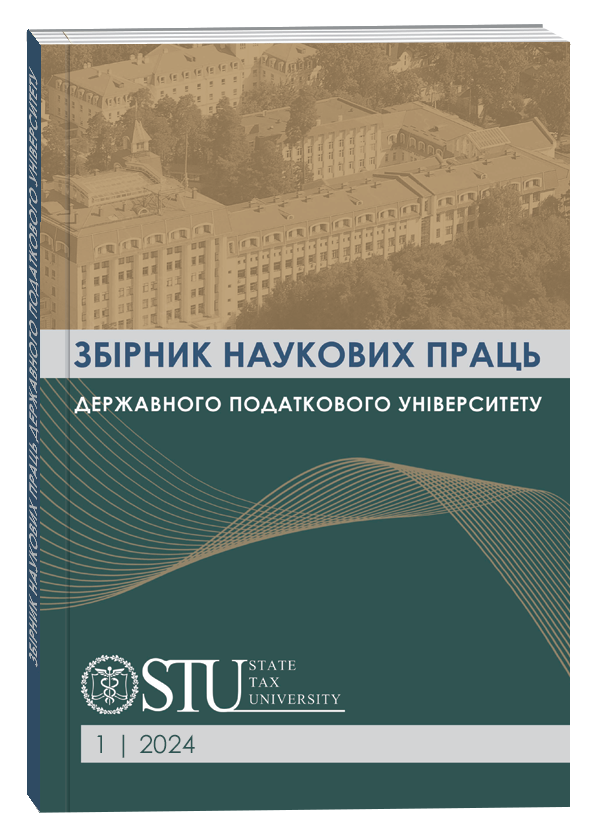APPROACHES TO THE ANALYSIS OF THE IMPACT OF MILITARY CONFLICTS ON SOCIO-ECONOMIC PROCESSES
DOI:
https://doi.org/10.32782/2617-5940.1.2024.11Keywords:
military conflict, socio-economic processes, forecasting problem, modelAbstract
The article examines approaches to the analysis of the impact of military conflicts on socio-economic processes in the country. Local armed conflicts and civil wars of the modern period have different specifics, tactics and intensity, which accordingly affects their economic consequences. Modern world trends dictate the conditions under which it is necessary to take into account the multitude of threats and constituent components of conflicts, which require an objective analysis of alternative models and algorithms for solving the problems of analyzing the impact of military conflicts on socio-economic processes, opportunities for constructing forecast values of economic indicators. Analyzing the multifaceted consequences of the war in Ukraine, we can identify the following aspects: an increase in commodity prices and inflationary pressure, disruptions in trade and supply chains between neighboring countries, and a decrease in business and investor confidence. The main economic indicators for measuring the impact of military conflicts on socio-economic processes: gross domestic product, number of refugees, national currency, Export/Import. The study analyzed the existing economic and mathematical methods and proposed the use of linear and nonlinear regression algorithms, Bayesian networks, neural networks and machine learning for the analysis of the impact of military conflicts on socio-economic processes. The use of the proposed mathematical methods makes it possible to build a model for predicting the impact of military conflicts on socio-economic indicators of development. The paper determined that, according to correlation indicators, the indicator of the gross domestic product depends most on industry, the influence of past and present flows of refugees on the future growth of this indicator was investigated based on the ARMA model.
References
Dunne J. P., Garcia-Alonso M. et al. Managing asymmetric conflict. Oxford Economic Papers. 2006. Vol. 58. Р. 183–208.
Hegre H., Ellingsen Т., Gates S., Gleditsch Р. Toward a Democratic Civil Peace? Democracy, Political Change, and Civil War, 1816-1992. American Political Science Review. 2001. Vol. 95(1). P. 33–48.
Collier P., Hoeffler А. Greed and Grievance in Civil War. Oxford Economic Papers. 2004. Vol. 56(4). Р. 563–595. URL: https://ssrn.com/abstract=630727
Cederman L., Hug S., Krebs L. Democratization and Civil War: Empirical Evidence. Journal of Peace Research. 2010. Vol. 47(4). P. 377–394.
Richardson L. F. Arms and insecurity – a mathematical study of the causes and origins of war. Literary Licensing, LLC, 2012.
Sandler T. Economic analysis of conflict. Journal of Conflict Resolution. 2000. Volume 44. Issue 6. P. 723–729.
Haynes K. Diversionary conflict: Demonizing enemies or demonstrating competence? Conflict Management and Peace Science. 2017. Volume 27, Issue 2. P. 337–358.
Фурсіна Н. А. Теорія виникнення військових конфліктів, воєн. Економiка та держава. 2018. № 12. С. 81–88. DOI: https://doi.org/10.32702/2306_6806.2018.12.81
Інтернет-ресурс. URL: https://lb.ua/blog/tetiana_bohdan/550614_finansovoekonomichni_naslidki.html
Institute for Economics & Peace (2023). Economic Value of Peace: Measuring the global economic impact of violence and conflict, Sydney. URL: https://www.economicsandpeace.org/wpcontent/uploads/2023/09/GPI-2023-Web.pdf
Інтернет-ресурс. URL: https://forbes.ua/money/velika-ekonomichna-perebudova-25082023-15642
Dunne J. P., Garcia-Alonso M. et al. (2006). Managing asymmetric conflict. Economic Papers. Vol. 58. Р. 183–208.
Hegre H., Ellingsen Т., Gates S., Gleditsch Р. (2001). Toward a Democratic Civil Peace? Democracy, Political Change, and Civil War, 1816-1992. American Political Science Review. Vol. 95(1). P. 33–48.
Collier P., Hoeffler А. (2004). Greed and Grievance in Civil War. Oxford Economic Papers. Vol. 56(4), рр. 563–595. Available at: https://ssrn.com/abstract=630727
Cederman L., Hug S., Krebs L. (2010). Democratization and Civil War: Empirical Evidence. Journal of Peace Research. Vol. 47(4). P. 377–394.
Richardson L. F. (2012). Arms and insecurity – a mathematical study of the causes and origins of war. Literary Licensing, LLC.
Sandler T. (2000). Economic analysis of conflict. Journal of Conflict Resolution. Volume 44. Issue 6. P. 723–729.
Haynes K. (2017). Diversionary conflict: Demonizing enemies or demonstrating competence? Conflict Management and Peace Science. Volume 27, Issue 2. P. 337–358.
Fursina N.A. (2018). Teoriia vynyknennia viiskovykh konfliktiv, voien. Ekonomika ta derzhava. № 12. S. 81–88. DOI: https://doi.org/10.32702/2306_6806.2018.12.81
Internet resource. Available at: https://lb.ua/blog/tetiana_bohdan/550614_finansovoekonomichni_naslidki.html
Institute for Economics & Peace (2023). Economic Value of Peace: Measuring the global economic impact of violence and conflict, Sydney. Available at: https://www.economicsandpeace.org/wpcontent/uploads/2023/09/GPI-2023-Web.pdf
Internet resource. Available at: https://forbes.ua/money/velika-ekonomichna-perebudova-25082023-15642



